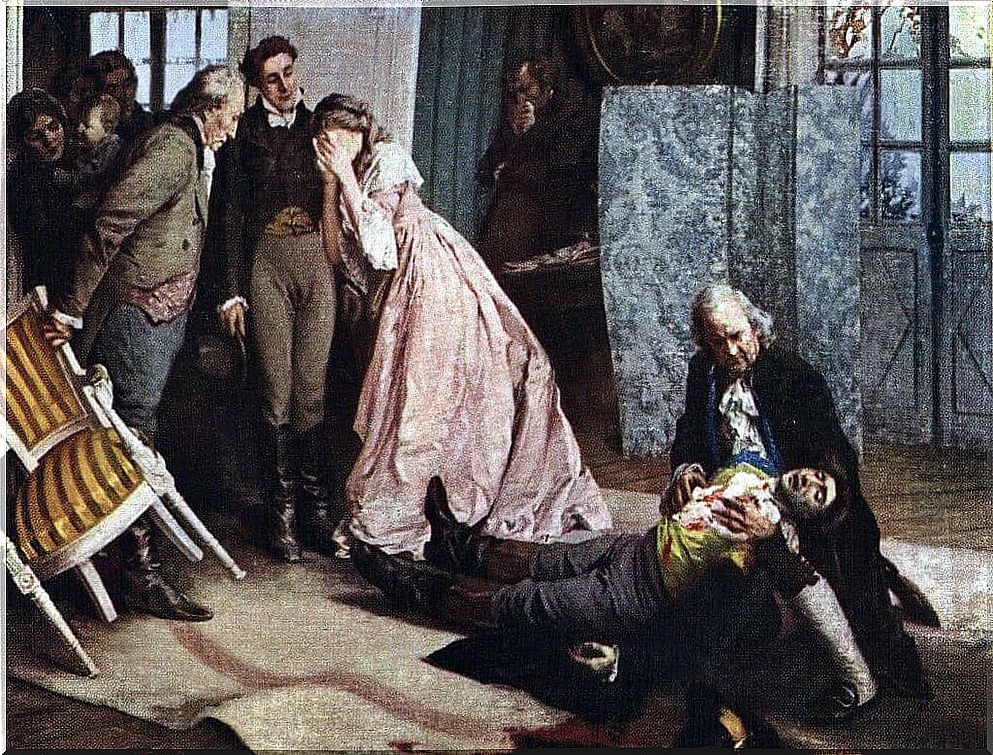Werther Effect: Why Suicide Can Be Contagious

One morning on August 7, 1962, the world woke up to a shocking situation. That night, Marilyn Monroe was found dead in her bathroom. The media soon confirmed that it was a suicide. In the following months, 303 people took their lives. The Werther effect once again ended up on the ballot papers.
In the 1990s, many years after that famous case, American society experienced something similar again with the death of Kurt Cobain. Every time the media reported that a famous person had committed suicide, there was an epidemic of suicide in the country.
But what kind of connection is there between someone from the entertainment world and a person like you and me? Could these individuals have followed some form of imitation process or was it simply a strange coincidence?
The Werther effect was the term coined by the psychologist David Phillips in 1974 to define the immediate effect of suicidal behavior. The name comes from “Young Werther’s sorrows” by the German author Wolfgang von Goethe. In this book, it ends with the protagonist committing suicide in the name of love.
Its effects became apparent shortly after its publication. In 1774, 40 young people took their lives in a way similar to the young Werthers. This strange phenomenon led to the book being banned in countries such as Italy and Denmark.

Based on similar cases, Phillips conducted a study between 1947 and 1968 in which he discovered something strange. He found that every time The New York Times published a story about the suicide of a famous character, the suicide rate increased by 12%.
The pattern has continued until our days. In 2017, Canada tried to ban the “13 Reasons Why” series after deciding that it could have the same tragic effect. The WHO has also produced a document with guidelines for journalists to show what they should report and not report in relation to incidents related to suicide.
It depends on how it is done. One of the things that one should keep in mind is that one should not go into detail regarding elements that can evoke emotions. This type of event should not trigger any kind of imitative process. However, it is clear that we must avoid sensationalism that could cause others to imitate the tragic event.
Some experts do not agree with the Werther effect in principle, but admit that there are some related effects. They believe that it is possible for people with suicidal tendencies to copy the actions of famous people. At the same time, however, they believe that celebrities cannot be blamed for other people’s suicides.
We should be vigilant about how we handle this type of news. No photos or identifying elements should be displayed, especially for children and adults. It is important that we do not idealize suicide as an escape route.

Despite all this, it is important to talk about suicide. We should be able to say that there is another way out and show the people who cannot see it exactly where it is. Being silent and looking in another direction only stigmatizes a problem that affects more and more people.
One should always try to address the problem of respect and avoid related taboos. Trying to hide something as real as this does not mean that it does not exist. It instead only makes it stronger.
A work that tells a story, no matter what form it is presented in, should not be blamed for human suicide. The same goes with the news. However, this does not mean that you should not report the news correctly and responsibly. When “The Young Werther’s Sorrows” was published, we did not have all the information and all the resources we have now. It should be much easier to express your feelings and ask for help than to take your own life, and here we all have a participatory role.









